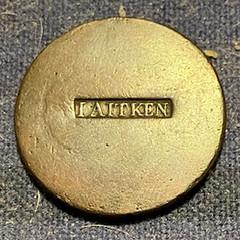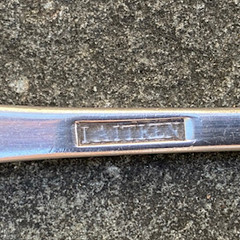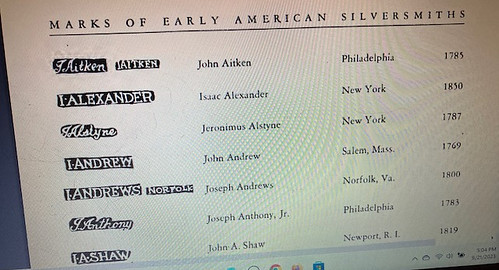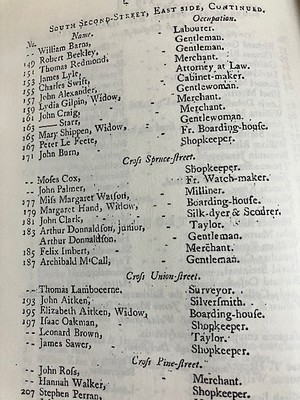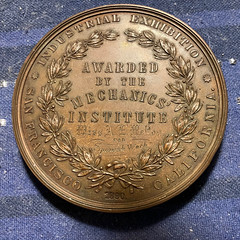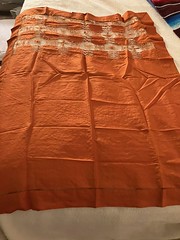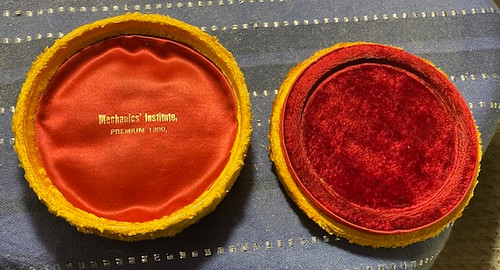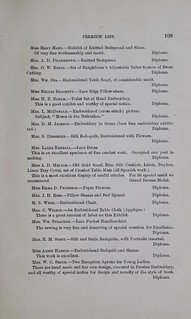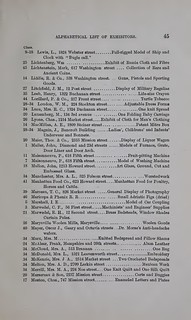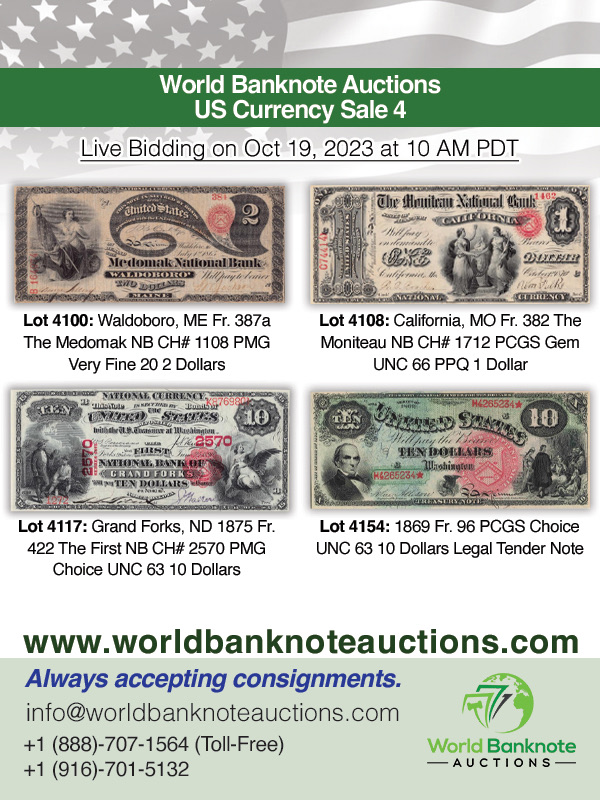
PREV ARTICLE
NEXT ARTICLE
FULL ISSUE
PREV FULL ISSUE
THE NUMISMATIC PROOF SCALEJerry Nashorn submitted these thoughts on numismatic collecting and research inspired by Greg Bennick's interview with Bill Groom. Thank you! -Editor I very much enjoyed reading Bill Groom's interview concerning counterstamps which is packed with information and sound insights. I think he's hit the nail on the head with his skepticism about many of the attributions contained in reference books, auction catalogs, and online auctions and price lists. And the "proof scale" discussed in Part 4 is a major contribution. The schema he has developed makes a lot of sense. They also would be of use when dealing with other types of numismatic material, such as maverick merchant tokens and award medals inscribed with the recipient's name where an absolutely certain attribution is often not possible. Of course, when dealing with inscribed award medals and merchants' tokens, most would fall into the 2-4 category while a large fraction of counterstamps, even after diligent research, would probably remain 0's or 1's. Bill's article obliquely raises another point. Because he has a strong interest in counterstamps per se, his approach seems to be buy the coin first and then do the research. My own collecting focuses on obtaining numismatic items associated with places in which I have an interest and over the years I've bought about 5-6 counterstamps. Because of my approach to collecting, if a counterstamp does not include the city in which it was issued, I always do the research first and only if my confidence level is at the 3 or 4 level to use Bill's scale, do I make the purchase.
Finally, in Part 3, Bill talks about his interest in acquiring examples of the products, if available and affordable, made by the issuers of counterstamps he owns. Of course as he points out, this is not often possible though it is more feasible in the case of counterstamps issued by photographers where examples of their work may be available at an affordable price. While I own very few counterstamps, I have acquired a fair number of award medals engraved with the name of the recipient. However, I have examples of their work in only three instances. Two of the three awardees are late 19th century photographers. For about $10-15 each, I was able to obtain cabinet portrait photos made in their studios. The final example is by far the most interesting and unusual of the three. The medal in question is a large bronze award medal issued by the San Francisco Mechanics Institute at its 1890 fair for Spanish/Mexican style sewing. The lot (which I found on eBay) included the medal itself, the original plush box, and one of the items displayed at the fair. (see attached photos). In terms of attributing the medal and sample to a specific person, I'm still at the 0 stage and assume I'll never be able to move beyond it. The 1890 San Francisco directory does not include anyone named Melton living at 2700 Larkin St. Census records are of little help since the 1890 Census was largely destroyed by fire in the 1920s while still in Census Bureau custody. The fact that Ms. Melton is only identified by her initials doesn't help either nor does the fact that the report on the 1890 fair is unclear as to whether she was married or single, though the inscription on the medal itself is Miss. I also very much liked Bill's concept of a "numismatic proof scale". We have scales for size, weight and grading - why not for research? We all have our own B.S. detectors flashing a big fat ZERO when a writer is just making stuff up. And ringing a loud bell when a writer hits one out of the park with comprehensive, convincing research. Great food for thought. -Editor
To read the earlier E-Sylum articles, see:
Wayne Homren, Editor The Numismatic Bibliomania Society is a non-profit organization promoting numismatic literature. See our web site at coinbooks.org. To submit items for publication in The E-Sylum, write to the Editor at this address: whomren@gmail.com To subscribe go to: https://my.binhost.com/lists/listinfo/esylum All Rights Reserved. NBS Home Page Contact the NBS webmaster 
|
